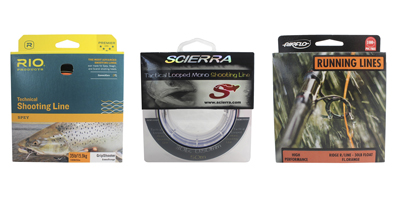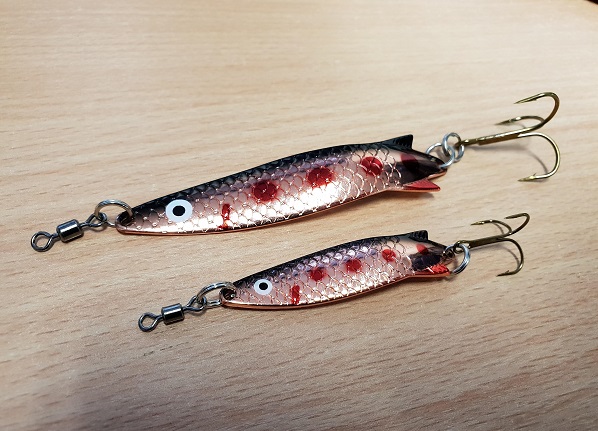
We have already covered the history of Skagit lines in our post about “The year of the Intruder” but for those looking to set up a Skagit line, we’re often asked, “where on earth do you start?”
You may have heard or read of others using ‘skagits’, you’d like to give it a go because it seems to work for them, but you don’t know what line to get, and will it suit the rod you have already? There are endless recommendations of how to set up a Skagit outfit for the Rios or N.America, Canada etc, but we were struggling to find a resource for the rivers closer to home here in Scotland and the rest of the UK. Many will say you don’t need a skagit in the UK, but once explained, the lines do open up allot more water to the angler willing to explore and learn new techniques. There are limitations to Skagit however, but if used properly and at the right time, you will have the advantage and quite possibly catch fish when others would give up.
What is a Skagit Line (in layman terms)?
Simply put, a Skagit line is shorter and heavier than the usual shooting head. The idea is, most shooting heads are circa 40ft in length, Skagit lines compress all of the weight that a 40ft shooting head has into a length of circa 25ft. This makes the line much thicker, heavier in ratio to length and therefore much more powerful when matched with a capable rod. Because of this massive increase in power, there are adjustments that need to be made in style of casting and the other components of the fly line you use. More on this later…

Why use a Skagit Line?
A Skagit setup is capable of carrying a very heavy fast sink tip and heavy flies at great distance. For example, if the river is swollen after a heavy downpour or snow-melt, or you feel the fish are lying deep, or even you think there might be a fish sitting in particularly fast water and your sink tip isn’t getting down to it, this is when you consider using a skagit line. Many Salmon anglers in Spring will use a skagit line because they know that with the cold water temperatures the fish are sitting deeper and are more lethargic and therefore not willing to move to a fly swinging over their heads. With the addition of a tungsten sink tip and a weighted fly, the angler can put the fly closer to these deep and lethargic fish.
How do I choose a Skagit line?
It is allot simpler than most would expect to choose the correct Skagit line for the fly rod you already own. Put it this way, most line manufacturers will put the corresponding line weight on a skagit line’s packaging now. They didn’t used to, but customer demand has made this happen. Very generally, a skagit line will be 100 grains heavier than a shooting head designed for the same rod. But, this is purely a statement for your information. If you are struggling to choose the correct weight of line, ask us what will suit your fly rod?
View our Salmon Skagit Heads
What else do I need?
1. Skagit lines need a tip on the front end. Because of the increased power mentioned above, a skagit line cast without a tip attached will over-power itself and actually fold in the air. A tip will transfer the energy down the line toward the fly resulting in the line landing straight. Skagit Tips come in two main forms:
- – The ‘level T’ tungsten tip – This is a tungsten impregnated non-profiled length of line that comes in different grades/concentrations of tungsten in the coating. These are recognised as “T” tips and normally referred to as “T” followed by the sink rate “11”, “14” and “18” for example. So, if someone where to recommend you use a “10ft length of T14” that simply means 10ft of level T tip with a sink rate of 14 grains per foot.
- – MOW/Flo tips – depending on the brand, (Rio = MOW, Airflo = Flo), these are tapered tips meaning they change from a thick end to a thin end, thickest always connected to the Skagit line. These tapered tips are very effective for transferring power down the line toward the fly, so they are excellent for increased presentation, but they also come with a huge selection of sink rates. As an example a Rio Mow tip kit including 6 tips. Each of these tips will present your fly shallower or deeper depending on the ratio of floating butt section to sinking tip section.
View our Salmon Skagit Tips
2. The other important component to consider is at the reel end of the skagit line. Running lines are great for shooting heads because they are designed to compliment the speed at which the shooting line will travel through the air. A running line is a level (non-tapered) length of fly line thin enough to fit 100ft or more onto a salmon fly reel, but now that you have a VERY thick Skagit line on your reel, the capacity of your reel is diminished. Additionally, the speed at which a skagit line casts through the air is much faster than a shooting head, so the more resistance/water retention from the running line the poorer it will perform, thus being held back.
Enter the ‘Shooting line’… Shooting lines are mono running lines, meaning they are much thinner than running lines and because of this you gain more space on your reel and your skagit line casts further. The thickness of the shooting line you choose depends on two factors.
- – What breaking strain do you feel confident with? A 30lb breaking strain shooting line is more than enough for most UK waters, but with little to no effect on the casting ability of the line, why not choose 50lb? It is slightly ticker however.
- – How nimble are your fingertips? Spring anglers will prefer a thicker shooting line simply because when fishing in cold conditions, a very thin shooting line can be difficult to feel and manage.
View our Salmon Running and Shooting Lines
3. New fly rod… No, this is not a requirement, but if you want to maximise a skagit line to its absolute full potential, look out for a medium action mid-curve fly rod, not fast like most newer Scandi style rods of today.

Do I need to make adjustments to my casting?
Yes, but minor changes. If you are an accomplished Spey caster, then the transition to this style of casting should come reasonably quickly. The main difference is adjusting your technique to compensate the Skagit head being almost half the length of the shooting head you are used to. Bring the fly round to just upstream of your body before making the forward stroke. This takes a little getting used to.
Is Skagit hard to cast?
No. Many will find casting a Skagit so much easier to cast because there is allot less importance put on the timing of the cast due to its shorter length. Many will convert to a skagit if they are finding wielding a double handed rod all day a challenge.

Am I limited to fast/cold water conditions with Skagit?
No, absolutely not!
Despite being originally designed to get down and deep, the line manufacturers of today have created means to use your skagit right through the season. Coming back to the Rio MOW tip kit mentioned earlier, in there you get a 10ft floating MOW tip… Weird right, if its designed for fast deep fishing why would I use a floating tip? Well, the tip does the job of defusing the energy the Skagit builds as it is cast out, but being a floating tip, your fly stays high in the water. Ideal for those mentioned above asking if it is hard to cast, those finding it easier to cast can use it year round.
Additionally, those who like to fish a sunray shadow type pattern in Summer will prefer a Skagit line because it is shorter, therefore you can retrieve more line in before having to make a cast, and thus they have covered more water.
Seatrout anglers who are 100% all about stealth are converting to Skagit Switch lines because of the fact they are short heads, forgiving and the perfect accompaniment of a floating or intermediate MOW or Fo tip on the front is ideal for their purposes.
For those anglers that find they fish high banks or tree-lined banks, skagit can be ideal as less space is required behind them to make a good cast.
So, Skagit is not just for the big river angler, it can be used at any time of the year, at nearly any river height and by those with almost any level of casting ability. All this is achievable by the range of tips you have. However, if you turn up to the river and the ghillie says “it’s a day for the spinning rods” bring out the skagit!








